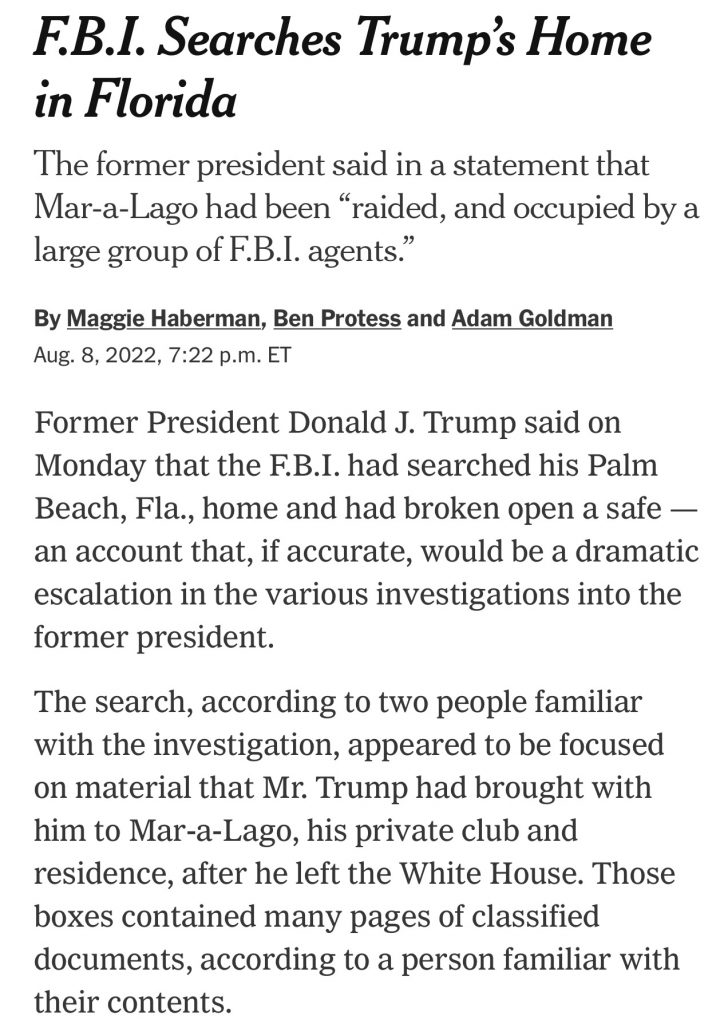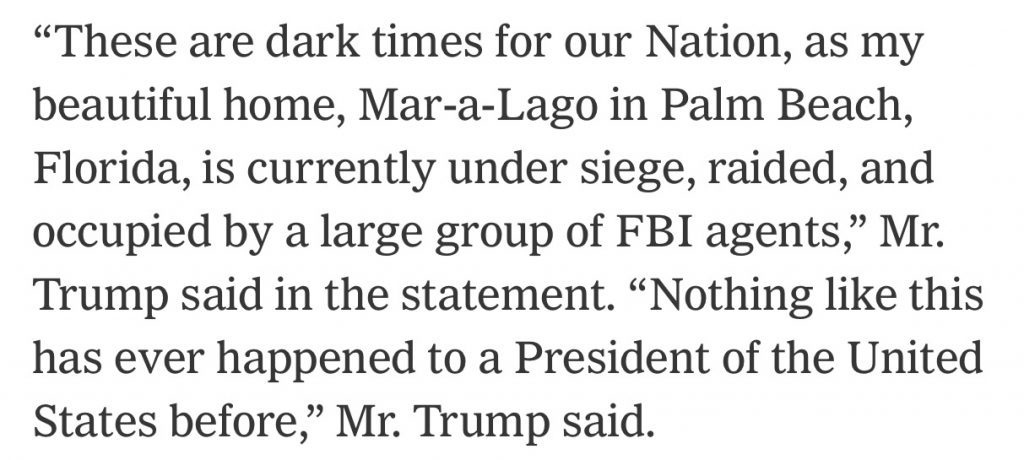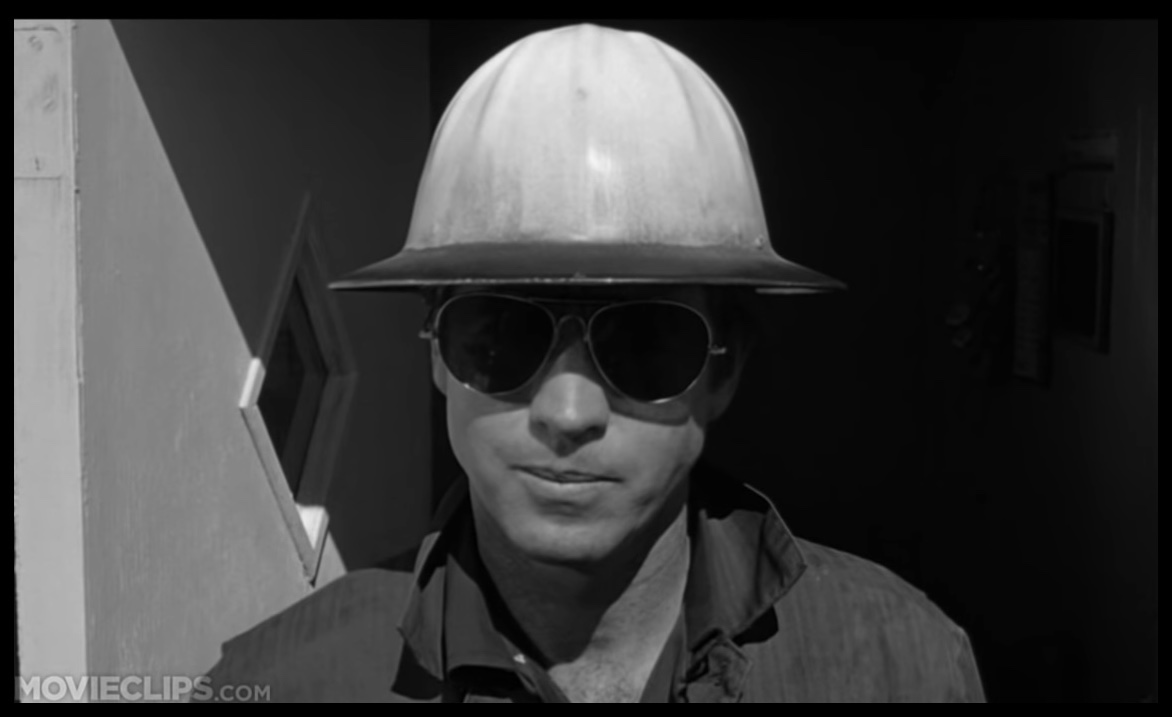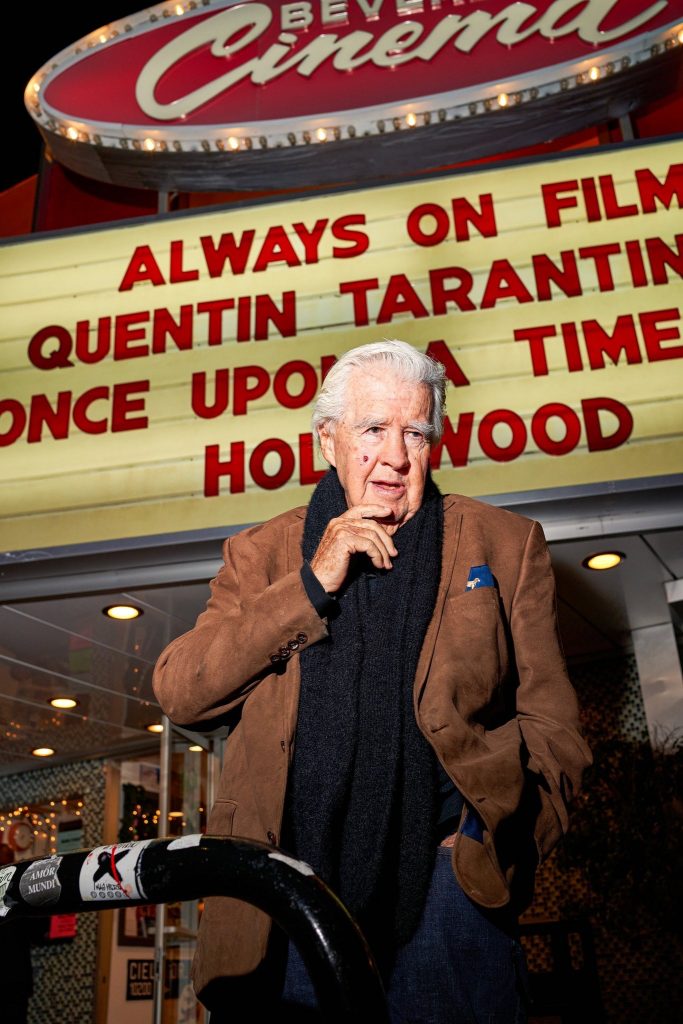

“Yeah, another female-centric superhero flick from a company with a spotty track record for this kind of thing, featuring a race-swap protagonist and some weird multi-versal plot device that felt like a cheap excuse to get Michael Keaton back as Bruce Wayne, and I imagine the poor test screening[s] didn’t exactly help convince the studio that they had a major hit on their hands.
“But if the rumors that I’ve heard are true, [Batgirl] actually scored higher than Black Adam and Shazam 2. But you’ve got to ask yourself ‘how bad does a film really need to be that the studio would rather pull the plug on the whole thing and lose tens of millions of dollars rather than just re-cut and try to salvage something halfway decent…this is the same studio, remember, that reckoned Birds of Prey, Justice League and Wonder Woman 1984 were fit for human consumption.
“And Batgirl, by the way, isn’t the only [Warner Bros. movie] to get shitcanned [as] the tumor is that Supergirl is also on the chopping block…hmmm, two female-centric superhero movies featuring race-swap protagonists that happened to get unceremoniously cancelled at the same time…
“Film division honcho Walter Amada‘s genius strategy was to basically do whatever was popular at the time, and what was popular the time was diversity, female empowerment and representation. Rather than try to work these things into his movies with skill, intelligence and patience, Warner Bros. instead decided to just straight-up replace popular characters played by problematic white men for more diverse alternatives.
“I think it’s fair to say that after nearly a decade of having ‘the message’ shoved down our throats, audiences are getting a little bit tired of this shit.”
…is said to be a vaguely raunchy, ’70s-styled road movie (possibly in the vein of Mark Lester‘s Truckstop Women?) about a couple of queer women taking a trip between Pittsburgh and Tallahassee.

I’m very sorry about the death of Olivia Newton-John, who enjoyed quite the heyday in the ’70s and ’80s, and had weathered three bouts of breast cancer over the last 30 years (in 1992, 2013 and ’17). The adjectives that kept coming to mind when I thought of ONJ over the years were dreamy, delicate and wealthy. “Physical” and “Have You Never Been Mellow?” were her biggest songs…right? The film highlights, of course, were Grease (’78) and Xanadu (’80). Very sorry, cruel cards. But then again 73 bountiful years.
1. A flamboyant, epic-scaled, 185-minute version of Singin’ In The Rain, but a lot longer with the songs and dancing and smiles taken out. Call it a depravity-tinged survival story about Hollywood transitioning from the silent era to sound, although ultimately spanning three decades (mid 1920s through 1952).
2. Vincente Minnelli meets Fellini Satyricon in jazz-age Hollywood.
3. An epic-sized smorgasbord in which the excesses of The Wolf of Wall Street serve the story of Singin’ in the Rain.
4. The two leads are Margot Robbie’s Clara Bow-like actress** and Diego Calva’s “Manny Torres”. The latter is the main protagonist or audience identity figure — the observer-survivor. Robbie’s performance is said to be the big takeaway and a likely Best Actress opportunity. Pitt is playing what amounts to a tragic supporting player role, Clark Gable-resembling but partly inspired by John Gilbert.
And that’s all I have to say.
** Actually called Clara Bow in one of the script drafts but since changed.
IndieWire‘s Anne Thompson has posted a 2023 Best Actor prediction piece…basically a checklist of the performances that Thompson believes might end up as noteworthy contenders.
Here’s the HE take on Thompson’s list — those in boldface have at least a chance of breaking through while those not in boldface almost certainly haven’t a prayer.
HE sez there are only seven likely Best Actor contenders right now, and even these seem iffy: Elvis‘s Austin Butler (but no win), Bardo‘s Daniel Giménez Cacho, The Whale‘s Brendan Fraser, Empire of Light‘s Colin Firth, The Son‘s Hugh Jackman, Armageddon Time‘s Banks Repeda and White Noise‘s Adam Driver.
Thompson Frontrunners:
Austin Butler (Elvis)…maybe or probably…can’t decide which.
Park Hae-il (Decision to Leave)…not a chance.
Daniel Kaluuya (Nope)..a totally insane speculation…no way in hell.
Bill Nighy (Living)…an affecting performance, agreed, but not happening.
Adam Sandler (Hustle)…no clue.
Thompson Contenders:
Christian Bale (Amsterdam, The Pale Blue Eye)…not happening.
Daniel Giménez Cacho (Bardo, or A False Chronicle of a Handful of Truths)…promising.
Adam Driver (White Noise)…maybe.
Colin Farrell (The Banshees of Inisherin)…maybe but unlikely.
Colin Firth (Empire of Light)…maybe.
Brendan Fraser (The Whale)…how do you ignore this performance?…the girth factor alone demands attention.
Brendan Gleeson (The Banshees of Inisherin)
Kelvin Harrison Jr. (Chevalier)….no clue.
Hugh Jackman (The Son)….likely.
Brad Pitt (Babylon)…Pitt’s “Jack Conrad”, a tragic figure based partly on John Gilbert but resembling Clark Gable, is a supporting character. They might be able to sell his performance as a lead, but he’s definitely not one in any kind of classic sense.
Eddie Redmayne (The Good Nurse)…no idea.
Song Kang-ho (Broker)…not a chance.
Thompson Long Shots
Timothée Chalamet (Bones and All)
Tom Cruise (Top Gun: Maverick)
Harris Dickinson (Triangle of Sadness)
Jalil Hall (Till)
Paul Mescal (Aftersun)
Jack O’Connell (Lady Chatterley’s Lover)
Robert Pattinson (The Batman)
Cooper Raiff (Cha Cha Real Smooth)
Banks Repeta (Armageddon Time)
Sam Worthington (Avatar: The Way of Water)
I watched this Red Hot Chili Peppers meet James Corden karaoke video after last night’s viewing of Trainwreck: Woodstock ’99. I’m still having tremendous difficulty with the footage between 10:45 and 12:15. On one level I admire Corden’s bravery; on another I feel embarassed for the poor guy. I don’t know what to think, but I love the front-yard wrestling sequence.
I watched the three Trainwreck episodes in one sitting — 9 pm to midnight. I’m sorry but most of the people who attended the original Woodstock festival were more spiritual or centered or gentle of manner or something along these lines; many of the kids who attended Woodstock ’99 were animals, or at least behaved like same. That youngish bearded guy said that Woodstock ’99 was plagued by greed and cluelessness, but mostly greed. Exactly. The huge bonfires at the end were fairly awesome, I have to say. But the heat, asphalt, garbage, contaminated water and “shit mud”….good God. I’m almost sorry I didn’t attend. Fred Durst (now 52) and Limp Bizkit obviously didn’t help matters.
Legendary Hollywood pitbull attorney Bert Fields has completed his journey. The 93 year-old representative of the rich and powerful (and a noted historical novelist) departed late last night at his home in Malibu.
Fields’ client list had included Michael Jackson, Jeffrey Katzenberg, George Lucas, Steven Spielberg, George Harrison, Warren Beatty, James Cameron, Mike Nichols, Mario Puzo, Joel Silver, Tom Cruise, Dustin Hoffman and John Travolta. He was widely and deeply feared.
The only contact I ever had with Fields happened 29 and 1/2 years ago, and it was indirect. It involved Warren Beatty and the reporting of an Entertainment Weekly piece about Love Affair. Here’s how I recalled it on 1.9.10:
I’ve just finished reading 24 pages about the making of the embarassing Love Affair (1994) in Peter Biskind‘s “Star: How Warren Beatty Seduced America” (Simon & Schuster).
Biskind offers quote after quote about how Beatty, the film’s star, producer and co-writer (with Robert Towne), marginalized and pretty much ignored and deballed Love Affair‘s director Glenn Gordon Caron.


Using quotes from several sources including Caron himself, Biskind also reports that director of photography Conrad Hall ignored Caron for the most part, treating him with little if any respect.
Towards the end of filming in late 1993 I was told similar stories by two excellent sources (the late production designer Richard Sylbert, a longtime Beatty collaborator and friend, and another insider I’d rather not name).
I included the material in a file submitted to Entertainment Weekly‘s “News & Notes” section, edited at the time by Maggie Murphy, for a story about the making of Love Affair. The file made it clear that Beatty was really running the show and that Caron (hired off his rep as the creative light behind TV’s Moonlighting and Remington Steele) was the director in name only.
I talked to Beatty about these stories, not naming the sources but telling him I’d heard this and that, and he (a) denied that they were true and (b) calmly expressed outrage that EW was working on a story along these lines, which he naturally felt would tarnish the film as a troubled production and perhaps dent its box-office appeal.
He mentioned at one point that he might sic his attorney, Bert Fields, on the magazine.
I don’t know who said what to whom, but I do know that EW ignored the Caron-had-his-balls-cut-off angle when they ran their story a week or two later in mid-December 1993. Anne Thompson, who also did some Love Affair reporting, was assigned to write a cottonball piece called “Love and Warren” that said Beatty was a perfectionist and blah blah. It was basically a valentine.
The Caron angle was removed, I was told, because managing editor Jim Seymore didn’t like the fact that we couldn’t name the sources. I heard second hand that he told Murphy there was “no story here.” I always suspected this was code for “I’m feeling too much corporate heat on this thing so let’s kill it or water it down.”
I later told Beatty that by all appearances he’d played his cards well and had clearly won the round. If you have any sporting blood you have to respectfully acknowledge when you’ve been out-maneuvered.
I got pretty good at imitating Beatty’s voice. I remember calling Thompson during the end of the Love Affair episode. She picked up and said hello. “Anne Thompson?,” I said. Yes? “Warren Beatty.” She fell for it. “Hey-hey….howz it goin’?'” and so on. “Anne, Anne…I’m sorry. It’s Jeff. Foolin’ around…sorry. I wanted to see if I was good enough.”
The key to imitating Beatty is to pronounce the first syllable of his first name so it doesn’t sound like “war” in War and Peace, but “Warren” if you were describing a network of interconnecting rabbit burrows.
Love Affair opened in October 1994 and was panned by just about everyone. I saw it once and found it flat and mundane. Roger Ebert was one of the few critics who gave it a break. It cost about $30 million and made $18 million, give or take. But Beatty would rebound four years later with Bulworth, one of the sharpest and most unflinching political comedies ever made in this country.
Seasoned director–writer friendo: “I’ve heard from [a post-production guy] that the low Batgirl test scores are accurate and that it’s basically not releasable. Quote: ’It makes Catwoman with Halle Berry seem like Abel Gance’s Napoleon.’
“Kevin Smith and others are castigating David Zaslav for this, but a stinker is a stinker.”
Follow–up: “The info is from a transfer house that uploaded a digital internal workprint for online viewing. It was the same version that was test-screened…[he] had heard it hadn’t gone well and knew why.
“There were a copious amount of ‘scene missings’ and incomplete or vacant opticals, but [he] said it plays like a long unsold pilot for the CW.”
An 8.2 THR story by Aaron Couch titled “Behind The Cancellation of Batgirl” reported a test score of a “very early version” (also described as a “director’s cut”) of Batgirl in the “lower 60s.”
That’s definitely a subdued, unencouraging response — not necessarily a sign of major difficulty as horror films, according to Couch’s story, tend to test in the 60s. It reportedly tested in that 60something range, and the downish but dynamically styled Black Swan allegedly tested around 55.
But Batgirl is a feminist superhero flick with a Latina star (In The Heights’ Leslie Grace) so how exactly would that kind of film be regarded as one that pushes horror buttons and could therefore be afforded a little statistical slack? The noirish D.C. brand is one thing; horror another.
Any way you slice it, it’s hard to imagine a seasoned marketer being enthused about a superhero flick testing in the low 60s.
From a 2.10.17 THR story about an exceptionally high test screening of Guardians of the Galaxy 2:

Dan Trachtenberg and Patrick Aison‘s Prey is obviously not my cup, but I’ve pledged to watch it regardless. (Probably this evening.) If you’ve seen it and feel strongly one way or the other, please share.
I’d much rather see Trainwreck: Woodstock ’99, a three-part doc about Michael Lang‘s infamous boomers vs. GenX/Millennial gathering that descended into rage and bonfires.
Full respect and admiration for the late Clu Gulager, who passed two days ago at age 93.
There’s a moment in Peter Bogdanovich‘s The Last Picture Show (’71) when Ellen Burstyn‘s “Lois Farrow” gives the finger to Gulager’s “Abilene”, her ex-lover (or sometime lover, I forget which) and Gulager responds with a slight grin. That, I submit, was his greatest moment as an actor; there’s no question that Abilene was his most respectable role.
Gulager’s performance in that landmark film is best appreciated via Bogdanovich’s 127-minute director’s cut, which is the only version you can stream or buy.
Gulager was also semi-memorable in Don Siegel‘s The Killers (’64) and in James Goldstone‘s Winning (’69). I’m sorry to have never seen Gulager’s A Day with the Boys, which vied for a Best Short Film prize at the 1969 Cannes Film Festival.


So far John Leguizamo hasn’t answered why his role of Chi-Chi Rodriguez in To Wong Foo, Thanks For Everything!…Julie Newmar wasn’t played by an actual cross dresser or trans person. He also played Henri de Toulouse-Lautrec in Baz Luhrmann‘s Moulin Rogue!, despite being neither French nor a midget. He also played an Italian in 1993’s Super Mario Bros..
What’s good for the goose ought to be good for the gander…no?
The Cuban-born Ana de Armas is playing Marilyn Monroe in Blonde. Does Leguizamo have a problem with that? Doubtful.